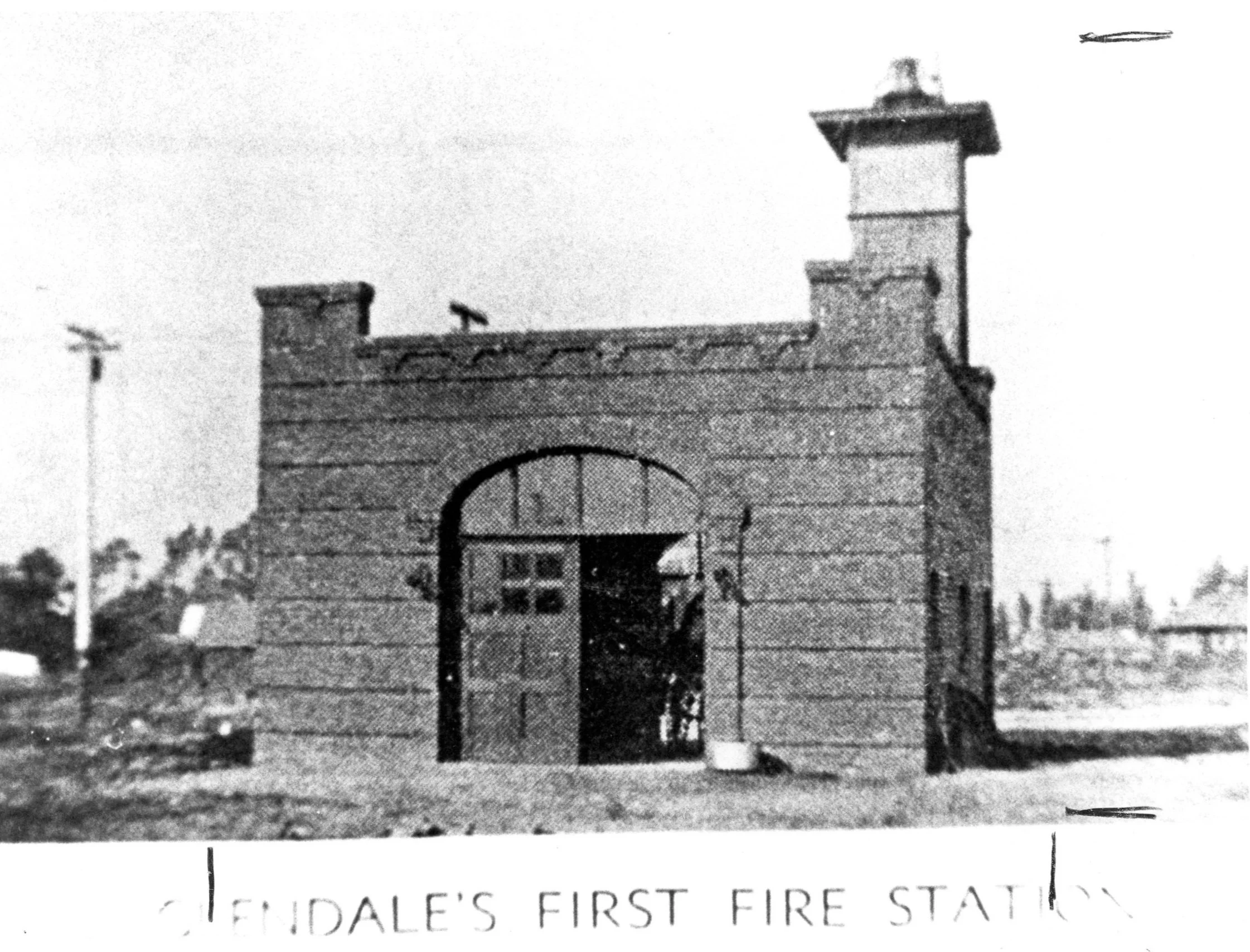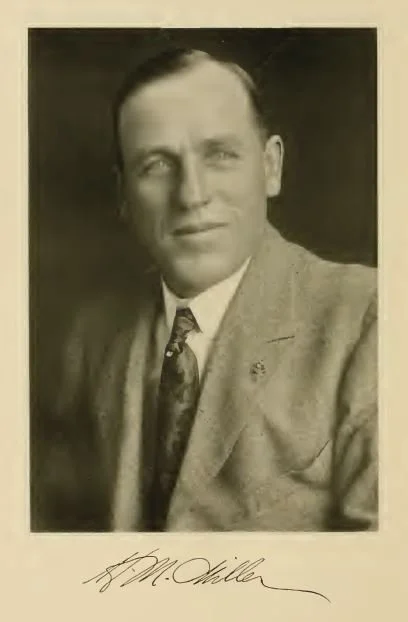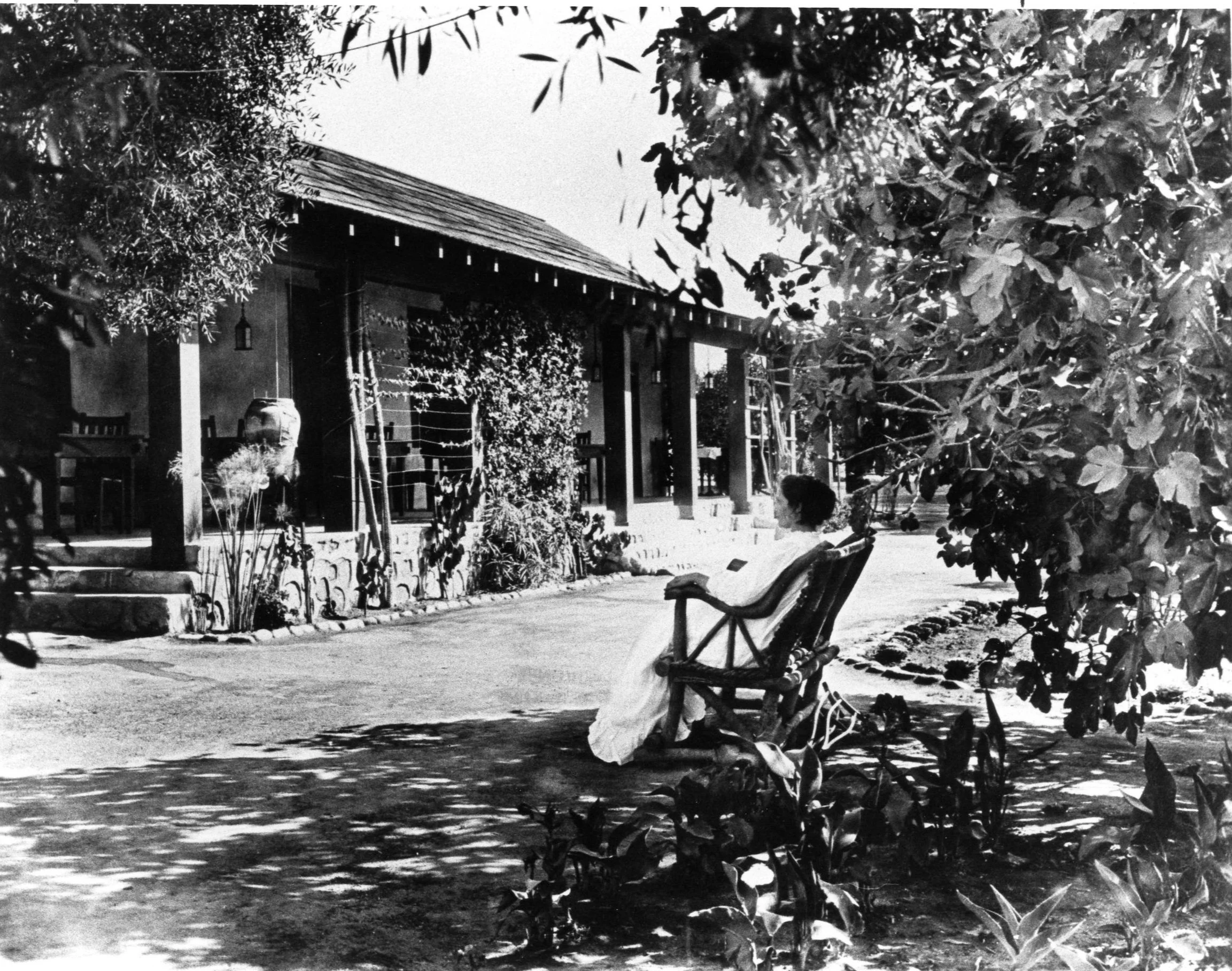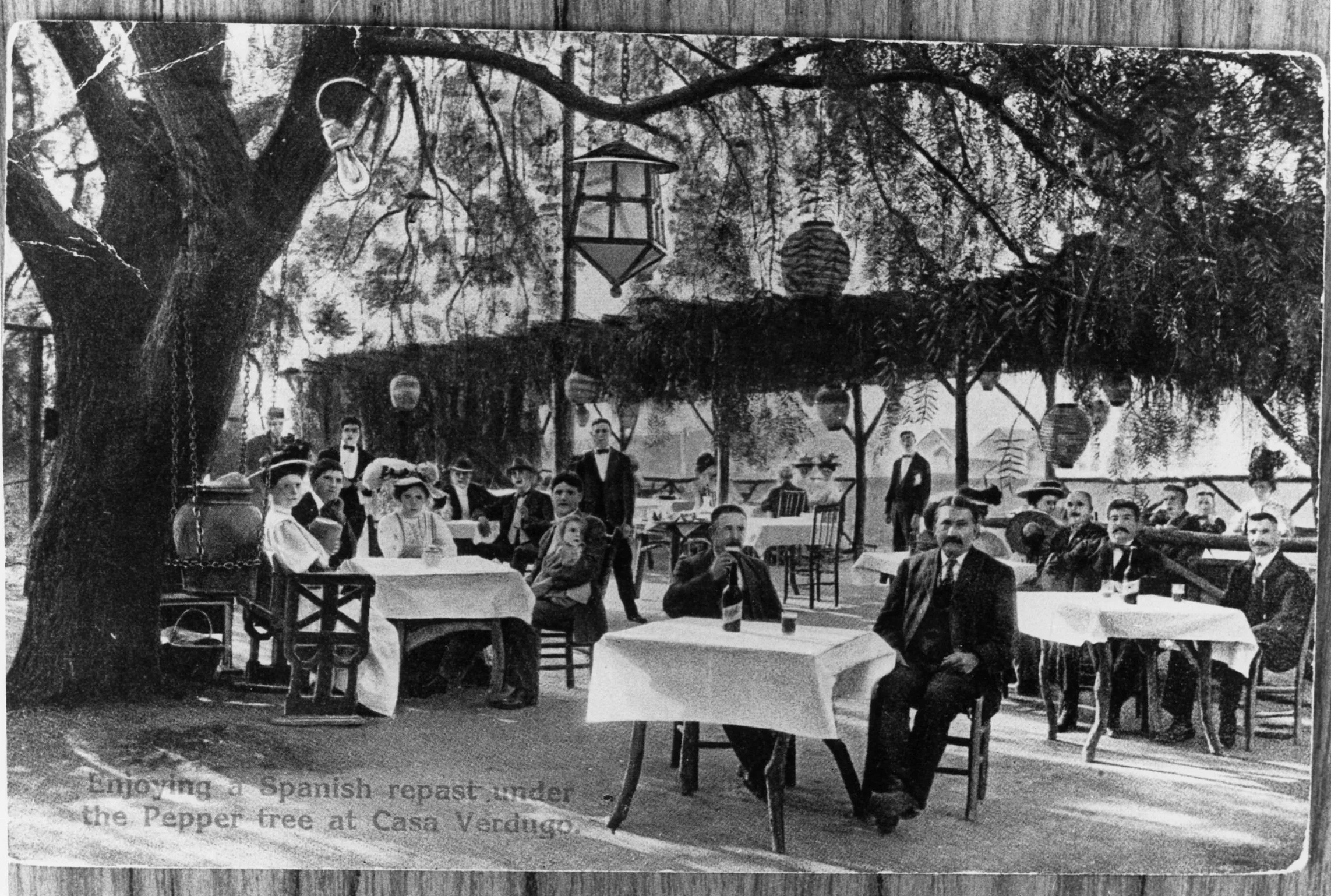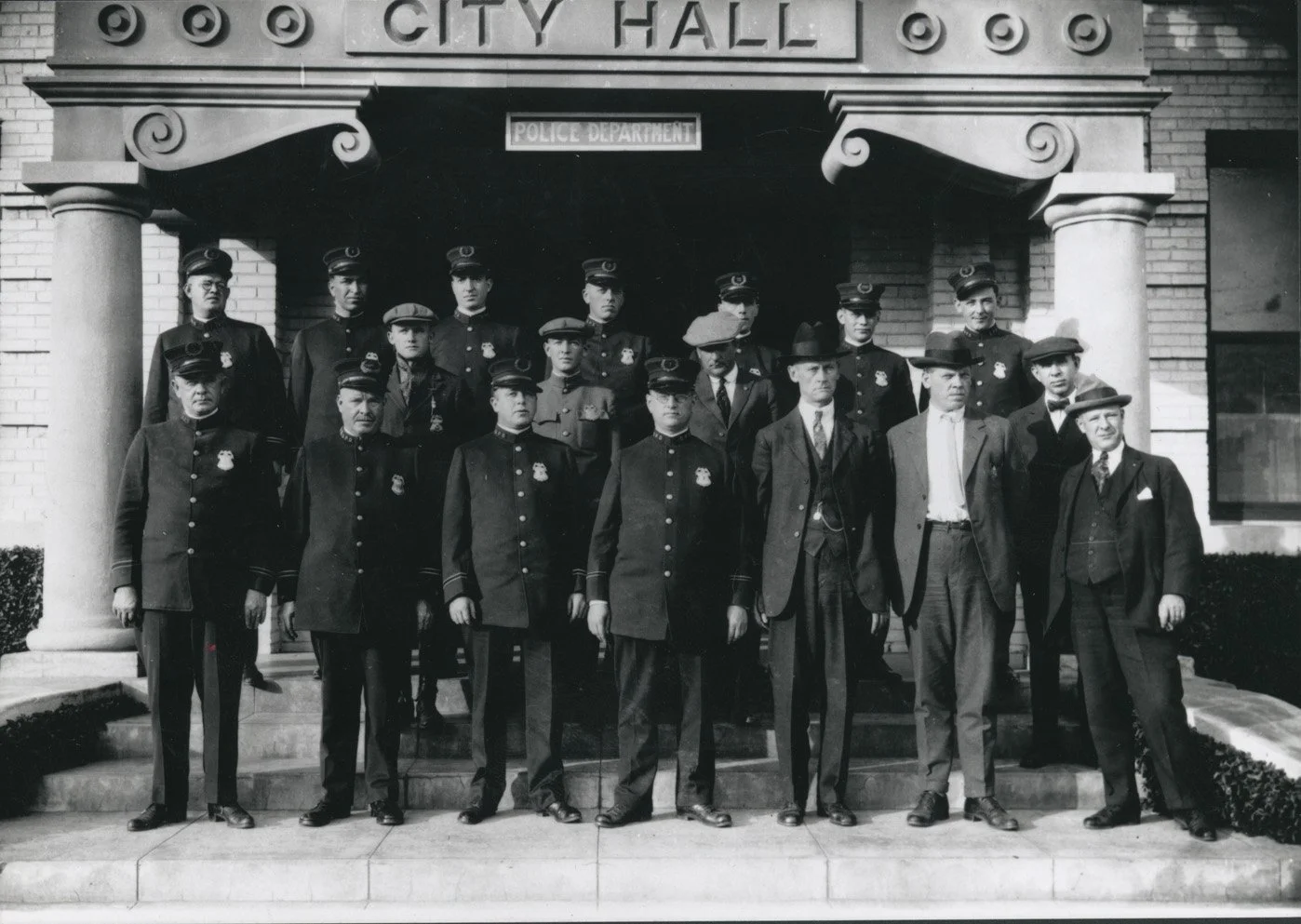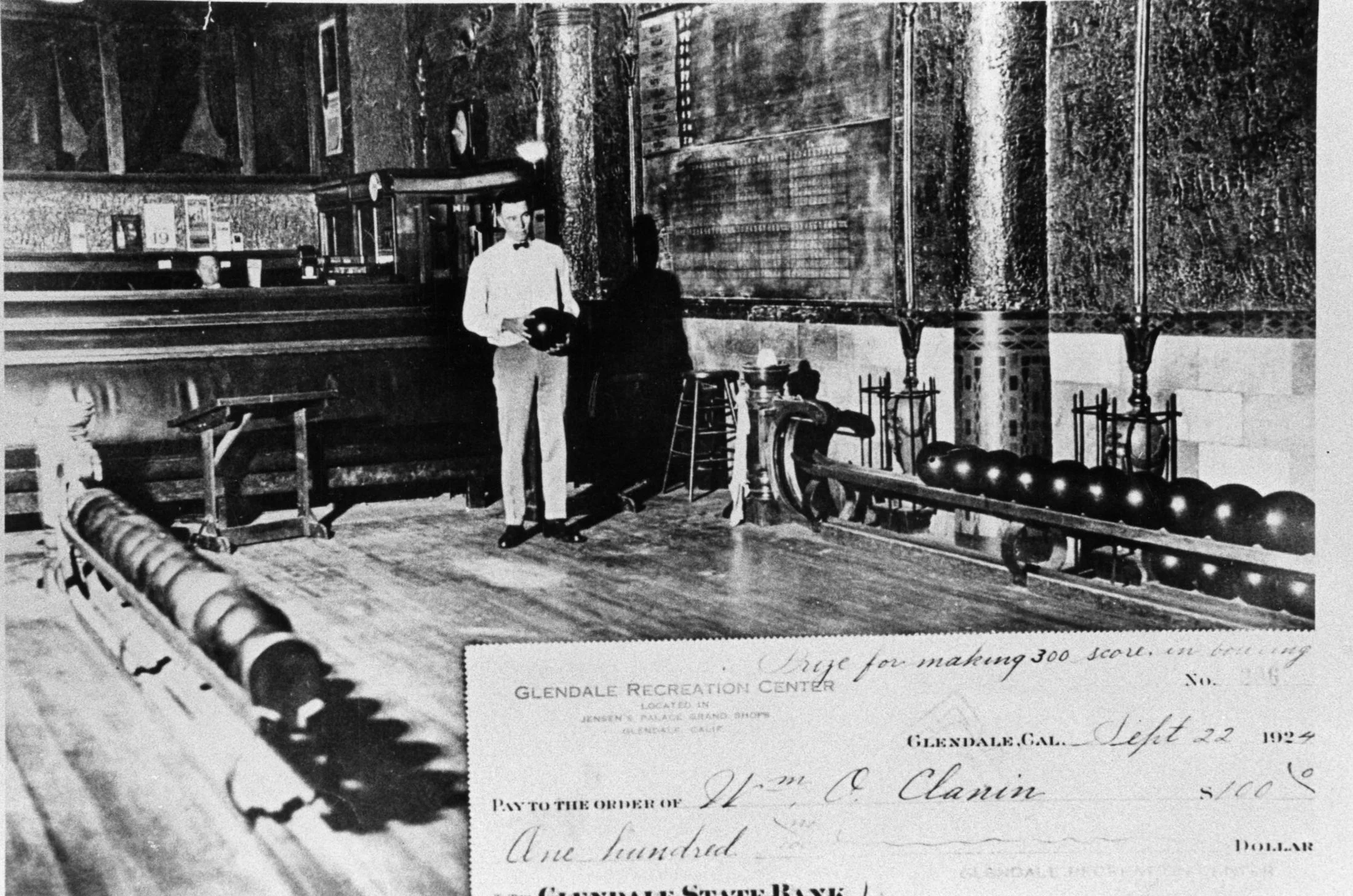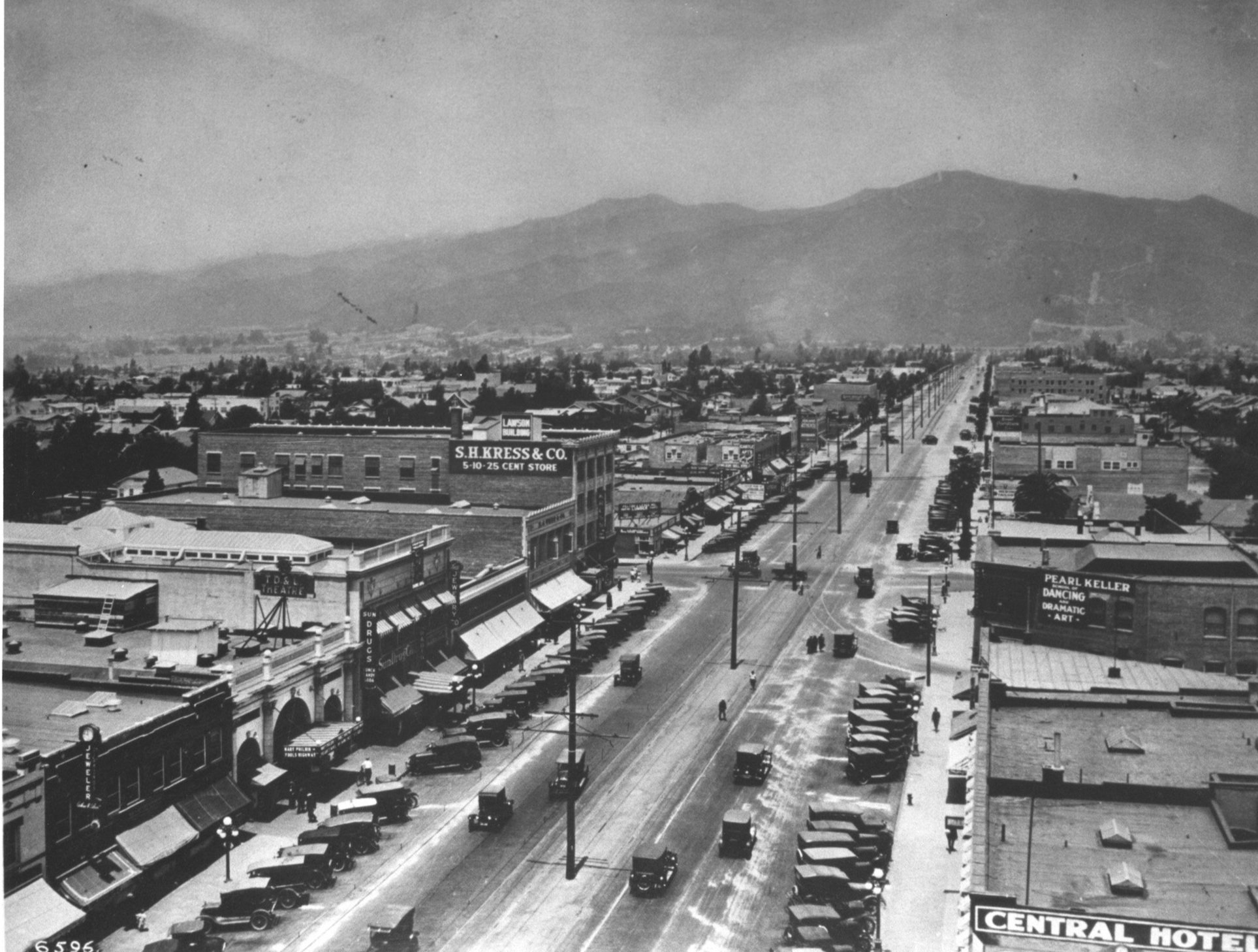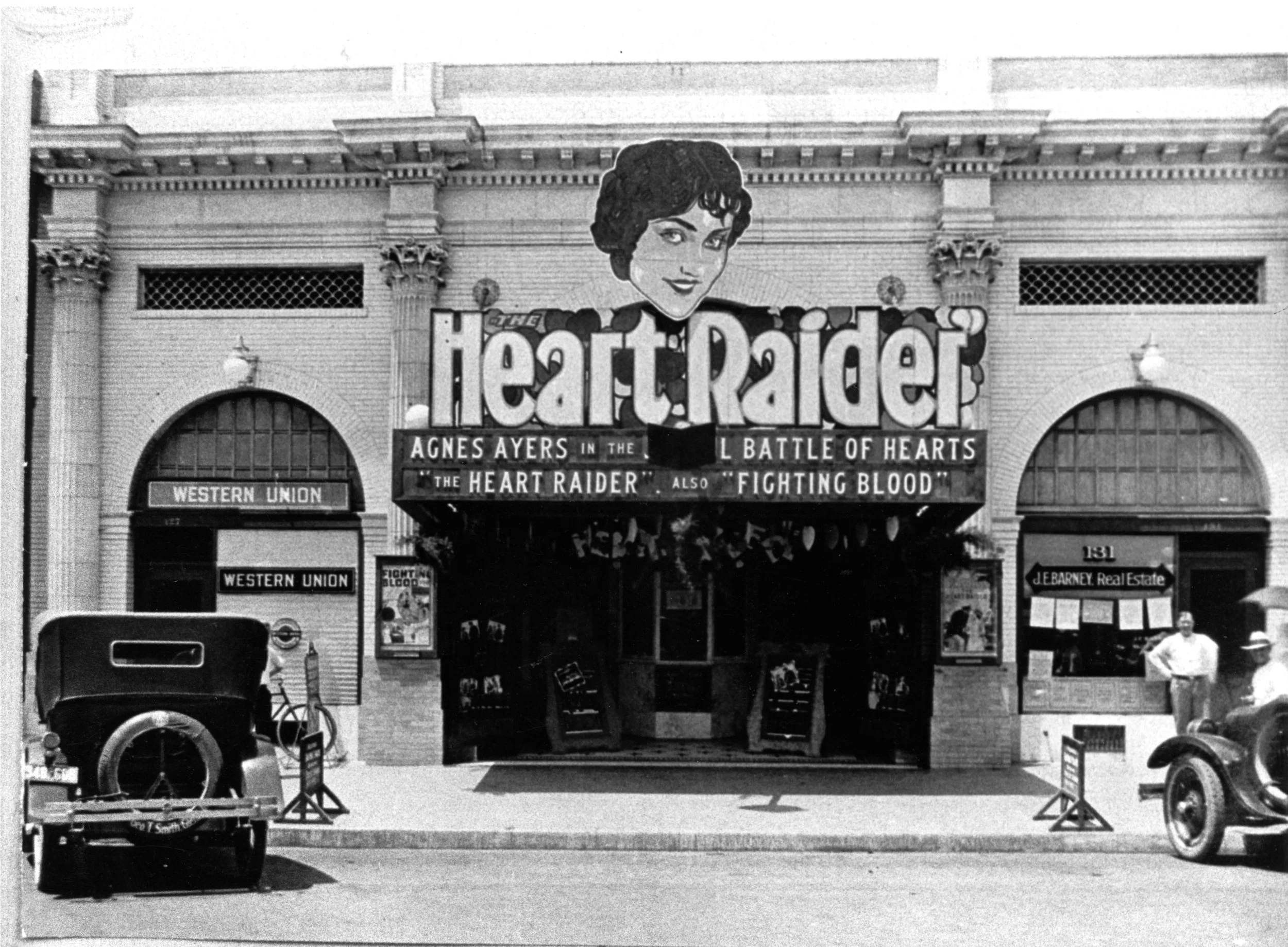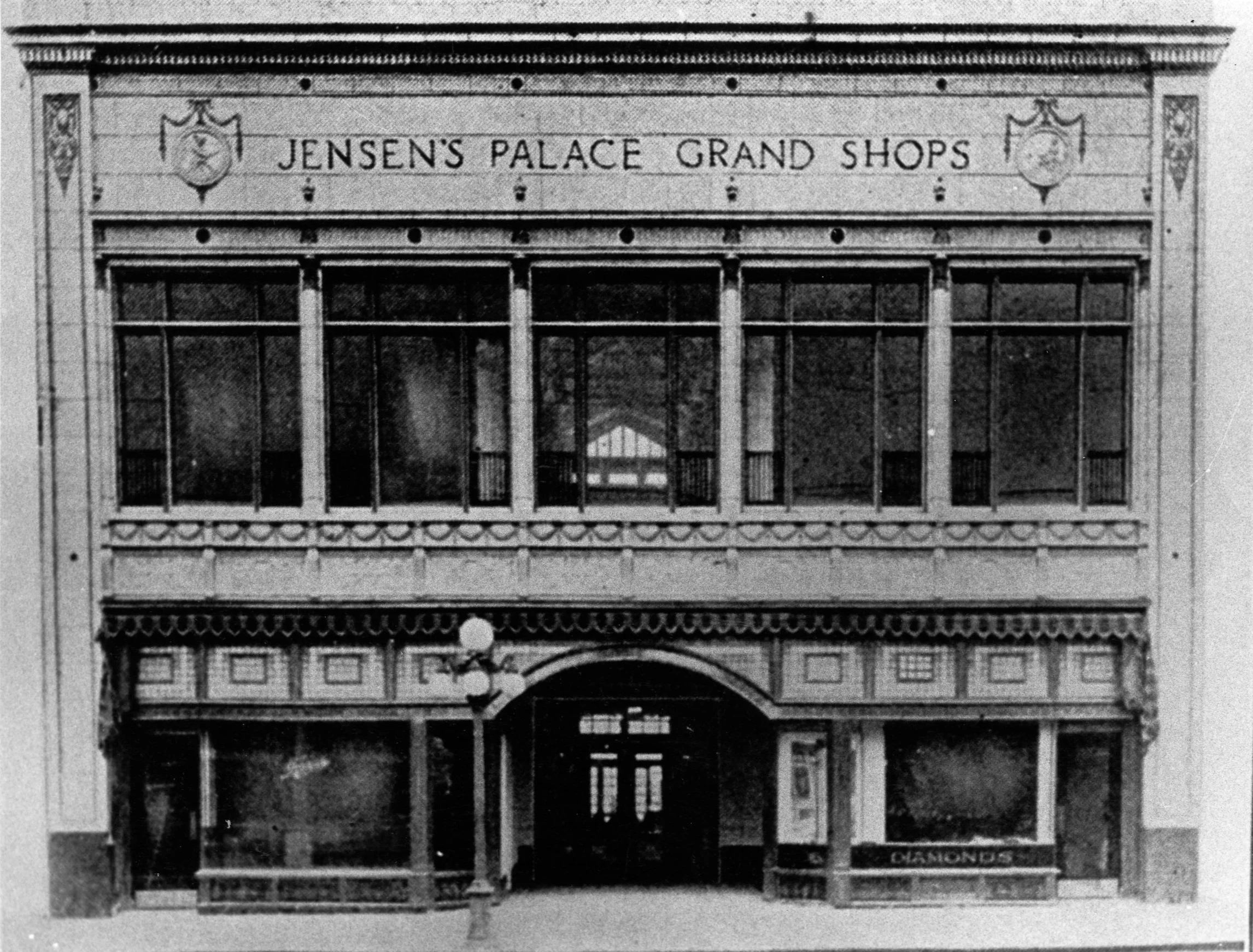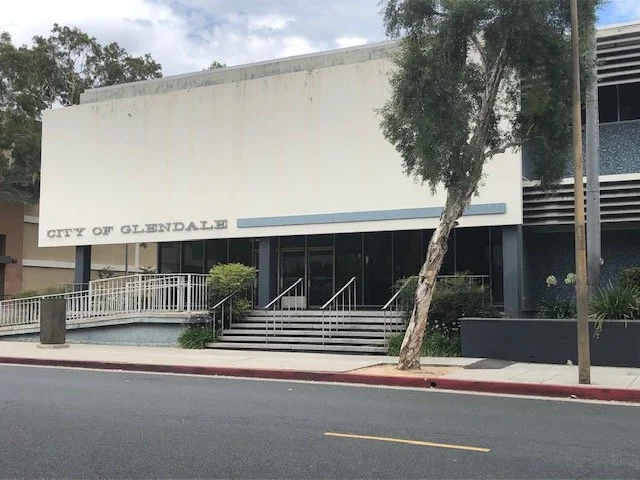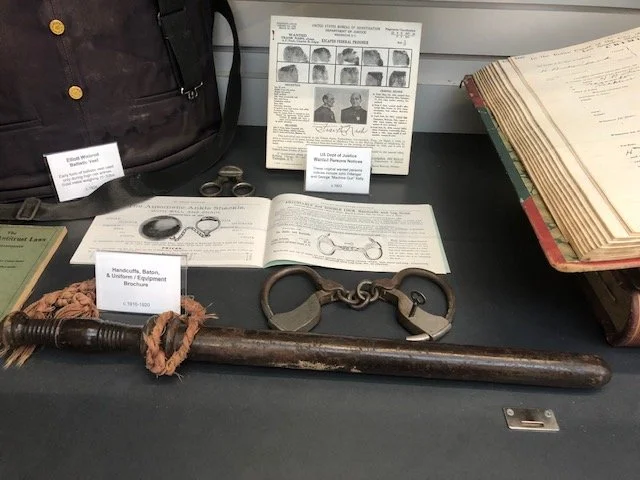Still Standing after all these Years
Part 11: Glendale Police Enforcement 1908 - 1915: A Pool Hall and Jensen Arcade; Plus Alcohol and the Casa Verdugo Restaurant
By Katherine Peters Yamada, Summer 2024
Photos from Glendale History Room unless otherwise indicated
Harry Miller was sworn in as our second marshal in 1908. His salary is not known; however, he led the Police and Fire Department and also a newly formed ‘Street Department.’
Our ‘City Fathers’ went all out to support him, according to GPD historian Captain Mike Post, retired, author, “Pictorial History, Glendale Police Department 1851-1990.” The city purchased their very first safety equipment, a horse and a wagon, plus a thousand feet of fire hose. In case of fire, a volunteer fireman would fetch the horse from the stable, take it to the shed where the wagon was stored, hitch it up and head for the fire.
Patrolman greets pedestrians ca 1910. credit GPD
In the early days, the police worked out of this fire station
Marshal Harry Miller credit: GPD
Glendale Declared a Dry City in 1908
Alcohol has long been linked to many crimes. A chapter of the Women’s Christian Temperance Union (WCTU) was formed in 1886, a year before a saloon opened. Post noted that the saloon had ‘promptly burned to the ground,’ possibly by a ‘civic-minded’ arsonist. (For more on this, see Part 4.)
Glendale was officially declared a dry city in 1908 and saloons did not reappear until weIl into the 1930s.
Wine Was Served Just Outside City Limits
Ironically, just north of the then city limits, a new restaurant was serving wine on a regular basis.
It all began in 1905, when L.C. Brand brought in the Pacific Electric Railway. The end of the line was at the top of Brand, near the small, unincorporated community of Casa Verdugo. Few structures were nearby; by 1909 the boulevard was lined with newly planted palm trees (which still stand today).
P.E.’s lines were designed to terminate near an attraction, to encourage Los Angeles residents and visitors to enjoy a long, scenic ride out of town. In this case, to an old adobe house where newly introduced ‘Spanish’ food was served - along with wine.
Helen Hunt Jackson’s 1884 novel, ``Ramona,’’ had been widely read and her description of Mexican colonial life contributed to this area’s unique cultural identity, according to Wikipedia.
The novel may have influenced Brand to seek out Piedad de Sowl, who had run a very popular restaurant in Los Angeles, and ask her to open a place in Casa Verdugo.
``People were excited to eat Spanish food in a Spanish setting, just as Ramona might have done, although she was fictional,’’ according to Charles Perry, long-time writer for the Los Angeles Times’ Food section. ``Every tourist had to visit it, just as surely as they had to see the beach at Santa Monica and Mission San Gabriel.’’
``Casa Verdugo was known for the famous cuisine of the tamale, the enchilada and the tortillas,’’ he added.
The restaurant was an immediate hit. News stories and society columns offered accounts of socially prominent residents, out-of-towners, and conventioneers who took the scenic trip by Red Car.
Patrons were invited to sit on the broad porch, ``with ancient pepper trees all around and the languorous, sweet breath of the fragrant valley floating up,’’ all the while listening to a picturesquely clad attendant singing favorite old songs,” according to an advertisement of the time.
According to Parcher, ``the Spanish dishes, the California wines, the songs and dancing of the senoritas and the general atmosphere of old Alta California were long remembered.’’
Casa Verdugo Restaurant
Diners at Casa Verdugo
Red Car at top of Brand, 1909. credit: Glendale Community Book, 1957
1907, Billiards
In 1907, a license to operate a billiards parlor at Broadway and Glendale Avenue was granted to L.F. Hadrich. The community took a ‘dim view’ of this, considering it a ‘den of iniquity,’ according to Parcher, who noted that, although Glendale had - until then - avoided saloons, a pool room now flourished in the center of town. A protest, backed by church members, forced city trustees to approve an anti-poolroom ordinance in 1909.
1908, First Safe Job
The first "safe job" was in April 1908, when, as Post describes it, “a rather inept crew of crooks blasted the Tropico-Glendale Berry Growers Association safe with so much explosive that the office door and all the windows were blown out. The few doIlars recorded as being in the safe were believed lost with the safe itself, as it suffered extreme damage.”
1908, First ‘Traffic Accident-City Property Involved’
One of the new marshal’s primary responsibilities was to ensure that the horse that puIled the fire apparatus was properly exercised.
Accordingly, Post noted, “the diligent new marshal hitched up the new fire horse to a wagon in order to exercise him. As the Glendale Evening News of the day describes it, the over-fed, under-exercised animal was ready for great things, and, as the marshal completed the harnessing job and prepared to get under way, the animal broke loose at a run. There was a lively steeple chase across Glendale Avenue ... with the city marshal hanging on valiantly to the lines, but an obtrusive electric light pole in the aIley caught the front wheel, threw the wagon aside, scattered the marshal and wagon bed around the vacant lots promiscuously, while the animal continued its wild dash for liberty. Marshal Miller later recaptured the horse; however, his escape from serious injury was deemed remarkable.”
Guns
By December 1908, crime had become a concern to the average Glendale citizen. Post noted that local gun permits were issued with "alacrity in the hope that their content buIlets will be placed where they will do the most good."
The following February, a local businessman became Glendale's first street robbery victim when he was accosted at gunpoint by a highwayman as he rode into town on horseback from Los Angeles.
1910, New City Hall
The firm of Anderson and Murdock won a contract to construct a new city hall at the northeast corner of Broadway and Howard in 1910. It was completed two years later.
City hall 1910
Police force in front of city hall
Officer Hollenbeck, on right, with Officer Laurance, left. credit: GPD
First Traffic Citation
The first motorist to receive a ticket for speeding was Cameron D. Thom in 1911. He was breezing along at a speedy eight mph and pulled over - by a policeman on a bicycle - for speeding with reckless abandon in his 1907 Oldsmobile. He was fined $10.
Thom, son of one of our founders, Cameron Erskine Thom, grew up on the family’s Glendale ranch; their home was at Isabel and California. Thom was an active member of Elks Lodge and when he died in 1954, graveside services at Forest Lawn were conducted by the Elks.
Thom was in his mid-30s when he received the ticket. It was issued by one of GPD' s most colorful “characters," Henry Hollenbeck. Drafted from the Street Department, Hollenbeck was appointed Deputy City Marshal in 1913.
He spent his early days on a bicycle, chasing down speeders disregarding the speed limit.
By 1913, the speed limit was 15 mph. and the following year, the city purchased its first motorized vehicle, a new Harley Davidson, for his use. He earned the nickname of "Slew Foot" after one of Glendale's first covert operations, as noted by Post. Hollenbeck apprehended a group of high school boys drinking beer and playing craps behind the high school. “This caused quite a stir, and ‘Slew Foot’ Hollenbeck was indelibly etched in Glendale’s police history.”
1913, First Recorded Murder
Louis Larsen was convicted of killing his wife and was condemned to death in 1914. By January 1915, the local press ran a scathing editorial bemoaning delays as long as one year from the conviction of murderers to the date of their execution. Larsen was executed ten days later.
1914, Drugs
In 1914, a banner year in our growth from a rural community to bustling city, the Glendale Evening News discussed the growing drug problem: "Police authorities have come to regard cocaine as one of the recognized sources of crime. The cocaine fiend seems to have his moral sense destroyed. It is believed that cocaine directly stimulates evil passions and evil deeds."
1914, Incidents from the Police Blotter
A resident on 9th Street (now Los Feliz Road) reported a pony wandering loose on 6th Street (now Colorado) and has him at home.
A Ford five-passenger car, with a top and windshield, nickel on the doors and a klaxon horn, was reported stolen by a Tropico resident.
A professor complained that, at 9:30 p.m., `some boys’ were creating a disturbance outside the schoolhouse where an oratorical was going on.’
A Hawthorne Avenue man lost control of his electric auto on the Hollywood Hill and the car ``turned turtle.’’
1914, George Harald Appointed New Chief
Glendale had grown significantly in the years since incorporation. By 1914, when Miller stepped down as fire chief and marshal, there were banks, hotels, restaurants, a lumber yard, newspaper, grocery hardware, drug and dry goods stores and of course, new theaters.
On January 22 a new lawman, George Harald, was appointed. Post noted that Miller stayed on as a uniformed foot-beat officer and assistant chief. He resigned in December after his election as Burbank’s Justice of the Peace and became a local police legend when he accepted a $100 reward for catching a bank robber and then throwing a large party for city officials with the money.
Chief Herald earned $120 per month, while his officers were paid $90 to $100 per month for working 12-hour days, six days a week. Given the heavy turnover at the time, this was apparently not an attractive wage for the job, Post noted. There were no benefits.
Standing are H.W. Hollenbeck and Frank Farr, the car’s driver. Lonnie Garwood sits on the motorcycle. GPD 1914
1914, First Communications System
Chief Herald was responsible for our first field police communications system. In March 1914, two large red lights were installed on Broadway at Glendale Avenue and at Brand Boulevard. When beat officers saw the lights on, they went to one of four call boxes around the city and called in to the station for instructions.
The year 1914 also had its dark side. The town marshals of both Burbank and San Fernando were shot to death in the line of duty. Within a few months, Glendale's first peace officer death occurred.
In 1914, the police force posed in a 1914 Overland touring car. Harry M. Miller, assistant chief, is in the driver’s seat; Fire chief and Marshal George Herald is in the right front. Seated in the rear are Captain E.A. Laurance and Officer C.V. Arrington.
1915, Sunday Movies
On January 2, 1915, police records indicated that the Majestic Theater and the Palace Grand Theatre would present shows on Sunday, regardless of a local ordinance against such activities on that day.
The Majestic Theatre had opened in 1912 near the corner of Broadway and Maryland Avenue, according to Glendale News, January 21, 1912. The theater was designed by Paul V. Tuttle, who also designed the town’s Carnegie Library on Harvard Street two years later. The theater reportedly closed around 1916.
The Palace Grand, designed by Robert J. Kitts, opened in 1914 on the west side of Brand, near Broadway. It was the first theater on Brand.
Built by Henry C. Jensen, a Los Angeles businessman, the $30,000 theater featured a stage, dressing rooms, orchestra pit, a large auditorium and - quite unusual for the time - two shops accessible from the lobby. This opulent theater soon drove the Majestic and the Glendale theaters out of business.
In its time, the Palace Grand was the ultimate in its field, with seats selling for 15 and 25 cents.
Robert Jensen, the builder’s young son, was appointed as the manager. Publicity came naturally to him, according to Parcher. He printed weekly programs and hired youngsters to distribute them.
In 1970, at age 74, Robert Jensen was interviewed about the theater’s history. He recalled the grand opening in 1914, with Mary Pickford starring in “Tess of the Storm Country,” and every seat filled. His good friend, Frank Chase, of the Gendale Press, printed his programs and billboards. A nine-year-old Marion Morrison, later known as John Wayne, was a frequent visitor in 1916. His pharmacist father, Clyde Morrison, managed the drug store next door….Marion never missed a western movie, Jensen said.
According to Robert Jensen, the Palace Grand closed in 1921 and the theater space was replaced with several stores. Renamed Jensen’s Palace Grand Shops, it became popularly known as Jensen’s Arcade.
The lower floor held the Glendale Recreation Center, with the city’s first bowling alley, as well as billiard tables. The center lasted until 1937.
The second floor shops were later transformed into the Egyptian Village Café, reflecting the Egyptomania that spread throughout the world after the discovery of Tutankhamun's tomb in Egypt.
The café quickly became a favorite meeting place for local clubs and organizations, as noted in the 1977 Historic Preservation Element, published by the city’s Planning Division. However, it closed in 1927.
Bowling Alley in Jensen Arcade
Brand Blvd
Palace Grand Movie Theater, on Brand 1914
Jensen Arcade
Interior of Egyptian Cafe, 1922
Still Standing After All These Years
Very little remains of these buildings and places. The Casa Verdugo adobe/restaurant gave way to houses and the small community of Casa Verdugo was later annexed to Glendale.
Top of Brand Blvd. photo: Kpyamada
The railing in the adjacent photo indicates the terminus of the Pacific Electric line at the top of Brand Blvd. Casa Verdugo restaurant was located in the general area beyond the church, which stands in background.
Nothing remains of Jensen's Palace Grand Shops, aka Jensen Arcade. By 1977, the former theatre / arcade at 131 and 133 North Brand housed the Dotty Lee Dress Shop and Evans Jewelers. Although the exterior and ground floor had been significantly altered by then, the second floor retained most of its original character and the café became of great interest as it was still in somewhat intact, as noted in the 1977 Historic Preservation Element.
Seeking to preserve this unique landmark, the newly formed Glendale Historical Society organized a Walking Tour of Downtown Glendale in 1981. Nearly 300 people toured the abandoned Egyptian Village Café, along with several other buildings, including the Masonic Temple.
By 1982, the cafe’s fate remained uncertain. “TGHS urged preservation of the entire Jensen building and both the Glendale Redevelopment Agency and the potential developer expressed concern for its preservation, but neither committed themselves to integrating restoration of the building into the redevelopment project,” according to a 1982 TGHS newsletter.
“On January 9, less than six weeks before its slated demolition, representatives of TGHS and American Trading, the owners and developers, met to evaluate the interior features, identify salvageable design elements, and develop a strategy for preserving them.
TGHS supported reconstruction of the café using those parts which could be salvaged, such as the columns, plaster decoration, lentils and cornice treatments, light fixtures, murals, and skylight.
The developers were willing to offer salvaged decorations to tenants for their use as they see fit, but did not intend to recreate the original arcade-style formation of the Jensen Building or to place preserved ornaments in the project's common areas.
After a four-year long campaign to save the café for future generations, TGHS was unable to persuade either the GRA (who had the power to require preservation of the Café) or American Trading of the value of integrating a restored 1920s building into the development scheme of the 100 block of North Brand Boulevard.
However, under the supervision of TGHS, American Trading had the salvageable decorative items removed and stored for final disposition by TGHS.”
The building was demolished in the mid-80s, giving way to a complex with an office tower and several restaurants, including, in 2024, California Pizza Kitchen, BJ’s and Islands.
TGHS members moved on, focusing their energies on restoring the Doctors House in Brand Park.
Although the Jensen Arcade did not survive, the house built in 1925 for Walter Jenson’s son, Robert, still stands in Northwest Glendale. It is listed on the Glendale Register.
Built for Robert Jensen. Credit: KPYamada
101 North Brand Blvd. Credit KPYamada
101 North Brand Credit: KPYamada
Two police stations now stand on Isabel Street. The ’old’ police station, at 140 N. Isabel, opened in 1960 and is available as a filming location. The new station, at 141 N. Isabel, opened in 2004. The lobby contains a display of historic artifacts, organized by Sergeant Teal Metts.
1960 Police Station. Credit: KPYamada
Display case Credit: KPYamada
2004 Police Station. Credit: KPYamada
First Record Book, 1914 Credit: KPYamada


